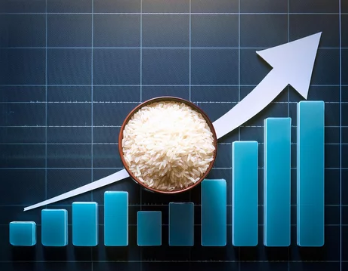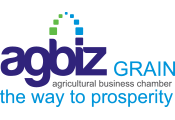
BLOG
Sacta levy boosts research and development

Just a few years ago, South Africa’s self-pollinating crops industry, encompassing soya beans, wheat, oats, barley, and lupins, was in steep decline. The development of new varieties had slowed, yields had stagnated, and the total hectares under cultivation was shrinking.
Andrew Bennett, CEO of the South African Cultivar and Technology Agency (Sacta), explains that unlike hybrid crops such as maize, self-pollinating crops used to allow producers to retain grain from one season and replant it in the next, often with minimal yield loss. South African legislation permitted this practice, enabling producers to avoid annual seed purchases. The recent proclamation of the new plant breeders’ legislation however limits these practices (see article elsewhere in this issue). While beneficial to producers, this undermined commercial incentives for seed companies to invest in breeding programmes for these crops.
The Sacta solution
To address this challenge, Sacta was established as a non-profit agency to administer statutory breeding and technology levies on self-pollinating grain crops. The goal: restore investment in cultivar development and break the cycle of declining innovation.
These levies – approved for fixed terms and subject to renewal and comment by all affected parties – are collected at the first point of sale, whether by the buyer or storage operator, and paid to Sacta. After costs and a 20% allocation to transformation initiatives, the remaining funds are distributed to seed companies in proportion to their market share.
It is worth noting that the parties who collect and pay over the levies also play an important role in collecting information regarding which cultivars from which companies were planted.
Producer and industry benefits
“This funding model enables sustained investment in breeding improved cultivars for South African producers,” says Bennett. “The result is a more productive, competitive value chain underpinned by better genetics and less dependence on imported grain.”
Producers directly benefit through access to better varieties with higher yield potential, improved disease resistance, and ultimately, greater profitability. In many respects, the levies are a producer-driven investment in the future productivity and competitiveness of South African agriculture.
Need for continual improvement
Bennett emphasises that continual improvement of cultivars is essential for the country’s self-pollinating crop industry. While hybrid crops such as maize and sunflower consistently meet domestic demand thanks to ongoing improvements, South Africa has long relied on imports for more than half of its wheat and soya bean requirements.
“Since the introduction of Sacta and new technologies and practices, that’s beginning to change – especially for soya beans,” he says. National yields and production areas have increased, and South Africa has even exported soya beans in favourable years. Wheat yields per hectare have also improved, though domestic production still lags primarily due to a reduction in planted hectares. As a result, wheat imports rose from 1,5 million tonnes in 2021 to almost 2 million tonnes in 2023. Meanwhile, barley production has climbed from around 330 000 to 377 000 tonnes over the past three seasons.
Bennett notes there is still room for improvement. “There’s always a need for more resilient and higher-yielding varieties.” Thanks to the levy system, South Africa is now seen as a more attractive market by international seed and technology companies.
“The number of registered soya bean varieties has grown from 150 in June 2022 to 279 by December 2024. For wheat, 65 new varieties have been registered since 2018, and three international breeding companies have established local operations. This indicates growing momentum in cultivar development.”
Understanding the technology levy
These advancements would not be possible without financial contributions from producers via the levy system. Sacta administers levies separately for each crop. For soya beans, currently the only crop with approved GMO traits, the levy is split into two components: one for genetics, and one for technology.
“These funds are allocated to seed and technology companies according to industry-agreed formulas. The aim is to ensure ongoing investment in both conventional breeding and biotech innovation, especially for traits such as herbicide tolerance and pest resistance.”
A further 20% of the levy goes toward transformation efforts, especially enterprise development and skills training. Sacta operates under the guidelines and requirements of the National Agricultural Marketing Council (NAMC) and the provisions of the Marketing of Agricultural Products Act, 1996 (Act 47 of 1996).
Supporting industry growth
Over the past year, the technology levy has significantly advanced the wheat and soya bean industries. “In wheat, we’ve seen improved genetic diversity and better- performing cultivars. In soya beans, the levy has accelerated the adoption of new varieties and traits, such as Intacta RR2 PRO, driving record production levels and expansion in planted area,” says Bennett.
In the past season, Sacta disbursed approximately R147 million to soya bean seed and technology companies, and R53 million to wheat seed companies in 2024. Additional smaller amounts also supported barley, oats, and lupins. These investments have strengthened local breeding pipelines, broadened variety choices for producers, and contributed to transformation initiatives.
By Koos du Pisanie

0 COMMENTS
LEAVE A COMMENT